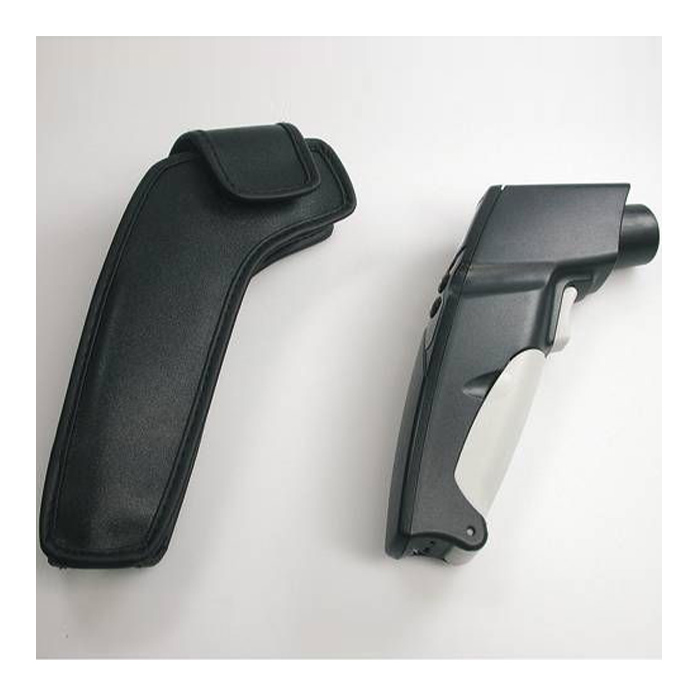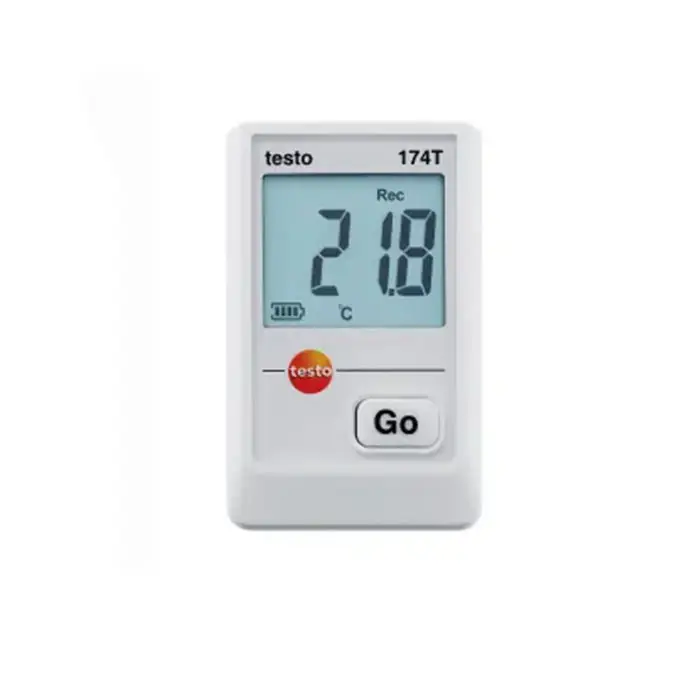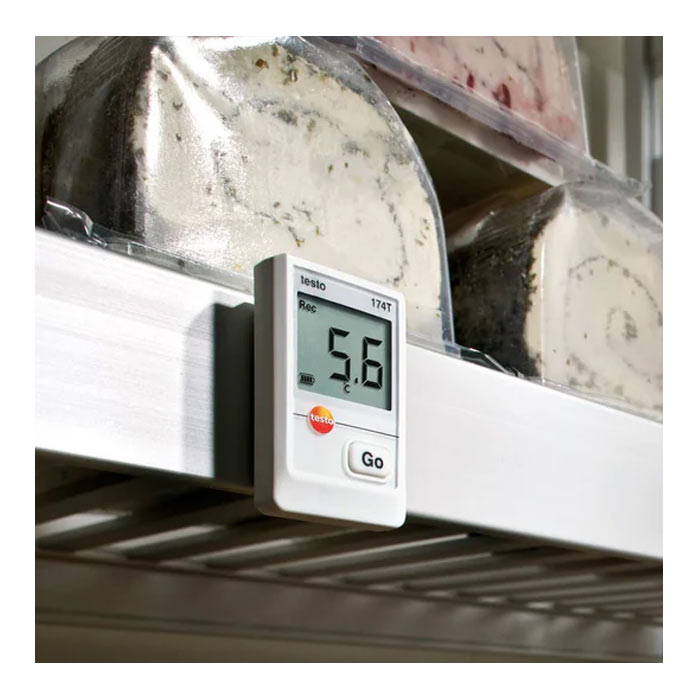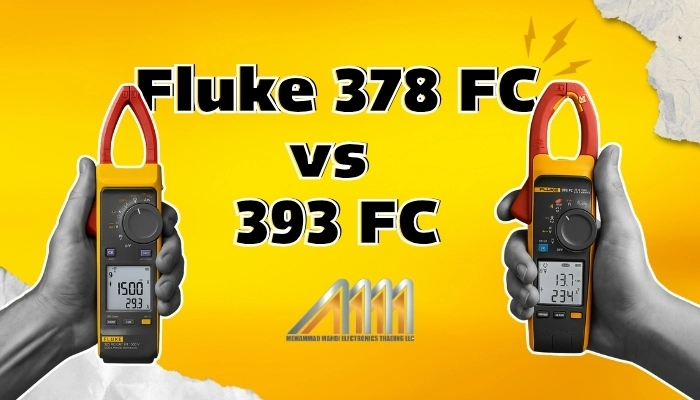
Megger MIT2500 Insulation Tester
$0.00 (excl.VAT)Megger MIT430/2 Insulation Tester
$0.00 (excl.VAT)Megger MFT-X1 Multifunction Tester
$0.00 (excl.VAT)Megger MIT515 Insulation Resistance Testers
$0.00 (excl.VAT)FLIR TG165-X Thermal Camera
Best Pocket & Palm-Sized Digital Multimeters : fluke 106 vs 107

If you are one of those looking for a pocket-sized digital multimeter to get your tasks done faster and with more precision, this article is just for you. Here, we will review the best pocket and palm-sized digital multimeters, and in addition to their features and benefits, we’ll compare different models, including the Fluke 106 and Fluke 107, to help you make the best choice.
Why Choose a Pocket-Sized Digital Multimeter?
Before we dive into the details, it’s important to understand why pocket-sized digital multimeters are a popular choice: Below, we will review a few key reasons.
- Portability: These devices are lightweight and small enough to carry around effortlessly, making them ideal for on-the-go professionals.
- Space-saving: Their compact nature ensures that they fit perfectly in toolboxes, bags, and even pockets without taking up much space.
- Convenience: Quick testing and diagnostics become more manageable with a device that’s always within reach.
- Efficiency: Despite their small size, these multimeters deliver accurate readings and reliable performance.fluke 106 vs 107 vs 101
fluke 106 vs 107 vs 101
Here is a comprehensive comparison of three pocket-sized digital multimeters from Fluke’s 100 series: Fluke 101, Fluke 106, and Fluke 107. This comparison will help you make the best choice based on your specific needs.
Fluke 106 vs 107 vs 101 Specifications
This comparison will help you make the best choice based on your specific needs.
| Feature | Fluke 101 | Fluke 106 | Fluke 107 |
|---|---|---|---|
| AC Voltage | 600V | 600V | 600V |
| DC Voltage | 600V | 600V | 600V |
| AC/DC Current | Not available | 10A | 10A |
| Resistance | 40MΩ | 40MΩ | 40MΩ |
| Capacitance | 1000µF | 1000µF | 1000µF |
| Frequency | 100kHz | Not available | 100kHz |
| Duty Cycle | Not available | Not available | Yes |
| Diode Test | Not available | Not available | Yes |
| Display | Non-backlit | Non-backlit | Backlit |
| Magnetic Hanger | Not available | Not available | Yes |
| Weight | 160g | 200g | 200g |
| Dimensions (HxWxL) | 130 × 65 × 27 mm | 130 × 65 × 27 mm | 142 × 69 × 28 mm |
Fluke 106 vs 107 vs 101: Pros and Cons Comparison
In this section, we will focus on the pros and cons of these three multimeters. This comparison will help you choose the best model based on your specific needs.
| Model | ✅Pros | ❌Cons |
|---|---|---|
| Fluke 101 |
|
|
| Fluke 106 |
|
|
| Fluke 107 |
|
|
Key Differences Between Fluke 101, Fluke 106, and Fluke 107
Based on the comparison table, here are the key differences between the Fluke 101, Fluke 106, and Fluke 107 models to help you make the best choice based on your specific needs:
1. Measurement Features
-
Fluke 101:
-
This model is designed for basic measurements, including AC/DC voltage, resistance, capacitance, and frequency.
-
Current measurement (AC/DC) is not available on the Fluke 101.
-
-
Fluke 106:
-
In addition to the features of the Fluke 101, it adds AC/DC current measurement up to 10A.
-
Lacks features like frequency and duty cycle measurements.
-
-
Fluke 107:
-
Includes all features of the Fluke 106 plus advanced features such as frequency measurement (up to 100kHz) and duty cycle.
-
Supports diode testing, making it useful for electronics testing.
-
2. Display and Visibility
-
Fluke 101 & Fluke 106:
-
Both models come with a non-backlit display, which can be difficult to read in low-light conditions.
-
-
Fluke 107:
-
The Fluke 107 has a backlit display, making it easier to use in dimly lit or dark environments.
-
3. Magnetic Hanger
-
Fluke 101 & Fluke 106:
-
Neither of these models come with a magnetic hanger for hands-free operation.
-
-
Fluke 107:
-
The Fluke 107 includes a magnetic hanger, allowing you to attach it to metal surfaces for hands-free use, which is particularly useful in industrial environments.
-
4. Size and Weight
-
Fluke 101 & Fluke 106:
-
Both of these models are compact and lightweight. Fluke 101 is slightly lighter, weighing 160g.
-
-
Fluke 107:
-
Fluke 107 is slightly larger than the other two models, weighing 200g, which might be less appealing to those who prefer a more compact device.
-
5. Price
-
Fluke 101:
-
Fluke 101 is the most affordable option, offering basic functions at a lower price point.
-
-
Fluke 106:
-
Fluke 106 is priced slightly higher than Fluke 101, but it offers additional features like AC/DC current measurement, making it a good choice for more professional use.
-
-
Fluke 107:
-
Fluke 107 is the most expensive of the three, as it includes advanced features like frequency measurement, duty cycle, and a backlit display.
-
Conclusion:
-
If you need something simple and cost-effective for basic tasks like measuring voltage and resistance, the Fluke 101 is the best choice.
-
If you need AC/DC current measurement and want a reliable and precise tool for both basic and intermediate tasks, the Fluke 106 would be a better option.
-
If you need advanced features like frequency measurement, duty cycle, and a backlit display, and you plan to work in low-light environments or industrial settings, the Fluke 107 is the best choice for you.
Need a reliable multimeter? Click here to reach our support
Which model is best for a beginner?
Fluke 101 is ideal for beginners. It is affordable, simple to use, and covers the basic measurements like voltage, resistance, and capacitance. It does not include complex features, making it easier for a beginner to operate.
What are the additional features of the Fluke 107 compared to the Fluke 101 and Fluke 106?
The Fluke 107 comes with several extra features like a backlit display, frequency measurement, duty cycle measurement, and a magnetic hanger. These features make it more suitable for professional use, especially in low-light environments or when needing hands-free operation.
Can the Fluke 101 measure frequency?
Yes, the Fluke 101 can measure frequency; however, it lacks the ability to measure AC/DC current or more advanced features like duty cycle and diode testing, which are available in the Fluke 106 and Fluke 107.
About the Author :

I’m Mahboubeh Jahebi, a content writer and SEO expert with over 5 years of experience in industrial equipment and precision measurement technologies. I’ve worked with international brands and contributed to the content strategy of Mohammad Mahdi Electronics (MME), a leading supplier of test instruments in the Middle East.
































 Bench Multimeters
Bench Multimeters